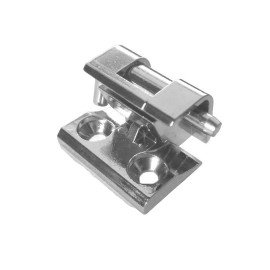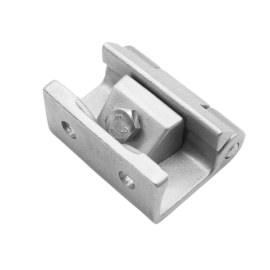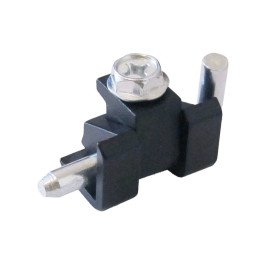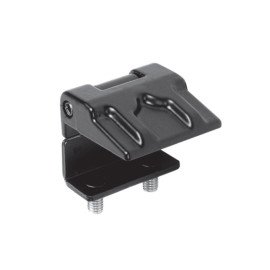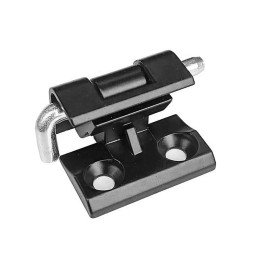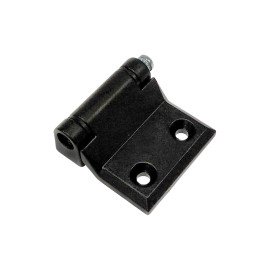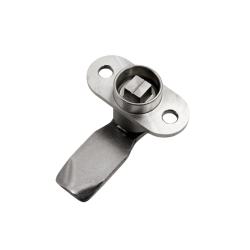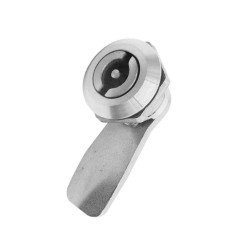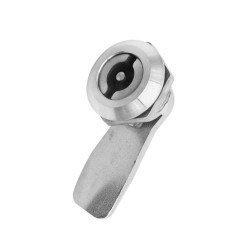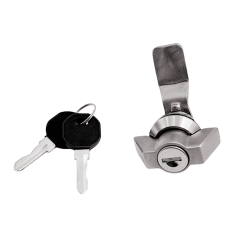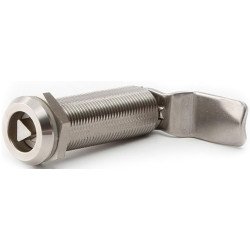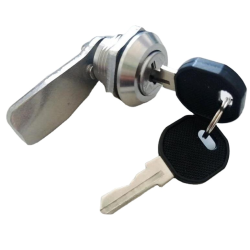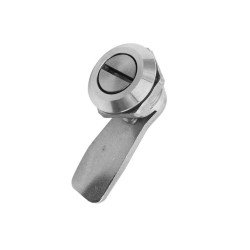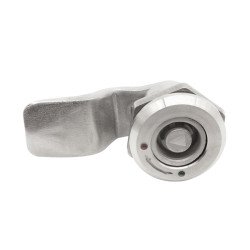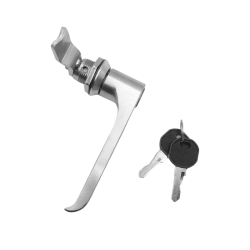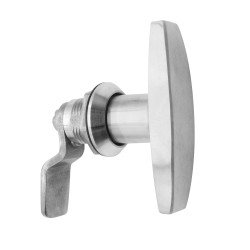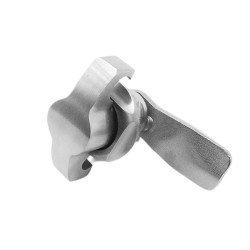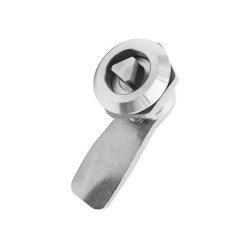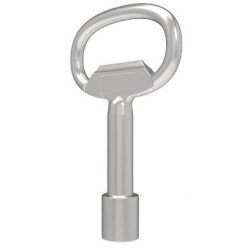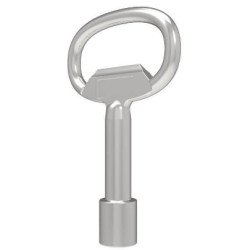Your shopping cart is empty!
- Best sellers
- New Arrivals
Locks
Locks are mechanical or electronic devices designed to secure objects, doors, enclosures, or areas by restricting access to authorized individuals. They are commonly used to protect property, assets, or sensitive information from unauthorized access. Locks come in various types and mechanisms, each designed to meet specific security needs and applications.
Types of Locks
Here are some of the most common types of locks used for various applications:
-
Padlocks
- Description: Portable, self-contained locks with a shackle that can be passed through an opening, such as a chain link, door hasp, or latch.
- Types:
- Standard Padlocks: Feature a basic shackle and body; often used for general security purposes.
- Combination Padlocks: Operate using a combination of numbers rather than a key, providing keyless security.
- Keyed Padlocks: Operate with a traditional key, offering various levels of security (e.g., high-security padlocks).
- Applications: Used on gates, storage units, lockers, fences, and toolboxes.
- Advantages: Portable, easy to use, and versatile, with varying levels of security.
-
Deadbolt Locks
- Description: A type of lock with a solid metal bolt that extends into the door frame, providing a higher level of security compared to spring-bolt locks. They are typically operated by a key or thumb turn.
- Types:
- Single Cylinder Deadbolts: Operate with a key on the outside and a thumb turn on the inside.
- Double Cylinder Deadbolts: Require a key to operate from both the inside and outside, providing extra security.
- Smart Deadbolts: Incorporate electronic or smart technology, such as keypads or Bluetooth/Wi-Fi connectivity, for keyless entry.
- Applications: Commonly used in residential, commercial, and industrial doors to provide strong security against forced entry.
- Advantages: High level of security, resistant to forced entry techniques, and available in various configurations (single, double, smart).
-
Lever Handle Locks
- Description: Locks that incorporate a lever handle rather than a knob, making them easier to operate, especially in commercial settings.
- Types:
- Keyed Lever Locks: Require a key for operation, often used in offices, commercial buildings, and public spaces.
- Passage Lever Locks: Do not lock; they are used for internal doors where security is not a concern.
- Privacy Lever Locks: Include a locking mechanism for privacy but can be unlocked from the outside in emergencies.
- Applications: Used in commercial buildings, hospitals, schools, and other high-traffic areas.
- Advantages: Easy to use, ADA-compliant, and available in various styles and finishes.
-
Knob Locks
- Description: Locks that incorporate a round or oval knob on both sides of a door. The lock mechanism is inside the knob, which can be operated with a key or turn-button.
- Applications: Commonly used for interior residential doors, such as bedrooms, bathrooms, or offices.
- Advantages: Easy to install and operate, available in various styles and finishes.
- Limitations: Less secure than deadbolts; can be vulnerable to forced entry techniques like lock-picking or bumping.
-
Mortise Locks
- Description: High-security locks that are embedded into a pocket (mortise) cut into the edge of a door. They typically include both a latch and a deadbolt mechanism in one unit.
- Applications: Used in commercial buildings, high-end residential properties, and institutional settings.
- Advantages: High security, durability, and strength; suitable for heavy-duty applications; can accommodate multiple locking points.
- Disadvantages: More complex and costly to install than other lock types.
-
Cam Locks
- Description: Small, compact locks with a rotating cam that engages with a strike plate to secure cabinets, drawers, lockers, and enclosures.
- Applications: Used in file cabinets, mailboxes, lockers, vending machines, and display cases.
- Advantages: Compact, versatile, and easy to install; available in keyed or keyless configurations.
- Limitations: Generally not suitable for high-security applications.
-
Rim Locks
- Description: Surface-mounted locks that are installed on the interior surface of a door, with a latch or bolt extending into a strike plate mounted on the door frame.
- Applications: Used in older or traditional buildings, gates, sheds, and internal doors.
- Advantages: Easy to install on existing doors, provides a moderate level of security, and can be used in conjunction with other locks.
- Limitations: Less secure than mortise or deadbolt locks, as they are surface-mounted.
-
Electronic Locks
- Description: Locks that operate electronically, using keypads, card readers, biometrics (fingerprint or facial recognition), or smart technology (Bluetooth/Wi-Fi).
- Types:
- Keypad Locks: Require a numeric code for entry, suitable for residential and commercial applications.
- Smart Locks: Can be controlled remotely via smartphone apps, providing features like keyless entry, remote monitoring, and activity logs.
- Biometric Locks: Use fingerprint or facial recognition for access, providing high security without the need for keys or codes.
- Applications: Used in residential, commercial, industrial, and institutional settings where controlled access is required.
- Advantages: Keyless convenience, customizable access control, remote monitoring, and integration with smart home systems.
-
Cylinder Locks
- Description: Locks with a cylinder mechanism that requires a key to operate. They come in various types, including single, double, and thumb turn cylinders.
- Applications: Used in doors, cabinets, drawers, and gates.
- Advantages: Versatile, easy to replace or rekey, and available in various security grades.
- Limitations: The security level can vary widely depending on the lock's construction and keying mechanism.
-
Magnetic Locks (Maglocks)
- Description: Locks that use electromagnetism to secure doors. When powered, the magnetic field holds the lock closed; when power is removed, the lock releases.
- Applications: Used in access control systems for commercial, industrial, and institutional settings, such as office buildings, hospitals, and data centers.
- Advantages: Strong holding force, suitable for high-traffic areas, and can be integrated with access control systems.
- Limitations: Require constant power supply; if power is lost, the lock will release.
Choosing the Right Lock
When selecting a lock, consider the following factors:
- Application: Determine where the lock will be used (e.g., residential, commercial, industrial) and the level of security needed.
- Type of Door or Material: Consider the type of door (wood, metal, glass) or material that the lock will be mounted on.
- Security Level: Assess the security requirements based on the risk of unauthorized access, potential for forced entry, and the value of the property being protected.
- Locking Mechanism: Decide whether you prefer a keyed, keyless, combination, or biometric lock.
- Environmental Conditions: Consider exposure to weather, moisture, or corrosive elements, especially for outdoor applications.
- Ease of Use: Consider who will be using the lock (children, elderly, or disabled individuals) and whether the lock is easy to operate.
- Budget: Determine the budget for the lock, balancing cost with the desired level of security.
Common Applications for Different Types of Locks
- Residential: Deadbolts, knob locks, smart locks, and lever handle locks are commonly used for home security.
- Commercial: Lever handle locks, electronic locks, mortise locks, and magnetic locks are used in office buildings, retail stores, and commercial spaces.
- Industrial: Heavy-duty deadbolts, padlocks, cam locks, and electronic locks are used in factories, warehouses, and industrial facilities.
- Automotive: Car locks, ignition locks, and steering wheel locks are used to secure vehicles.
- Outdoor: Weather-resistant padlocks, gate locks, and electronic locks are used for gates, fences, sheds, and storage units.
Countersunk stainless steel quarter-turn lock FY2513-0215-ZW
A countersunk stainless steel quarter-turn lock with a slotted square insert is a specialized lock d..
Double bit 3mm stainless steel quarter turn lock FY2513-0203-ZW
A double-bit 3mm stainless steel quarter-turn lock is a secure and durable locking mechanism used in..
Double-bit 5 mm stainless steel quarter-turn lock FY2513-0205-ZW
A double-bit 5mm stainless steel quarter-turn lock is a high-security, durable locking solution comm..
Hygienic stainless steel quater turn lock FY2513-0213-ZW
A quarter-turn stainless steel hygienic lock is designed specifically for use in environments where ..
Lockable stainless steel knob handle FY2310-0103-BZY
A lockable stainless steel knob handle is a robust and secure locking mechanism designed for use in ..
Quater turn cam lock 50 mm FY2513-5133-ZW
A quarter turn lock with a triangular 7 mm drive, made from stainless steel 304 is a specific type o..
Quater turn lock with key FY2513-0102-ZK
A stainless steel quarter-turn lock, available in both key alike and key different configurations, o..
Quater turn lock with slotted insert FY2513-0102-ZY
A stainless steel quarter-turn lock with a slotted insert is a commonly used locking mechanism for s..
Quater Turn Stainless Steel Lock for Railway FY2513-0101-ZML
A stainless steel quarter-turn lock with optional inserts is a versatile locking mechanism designed ..
Square 8 mm stainless steel quater turn lock FY2513-0408-ZW
A stainless steel quarter-turn lock with a square insert is a secure and durable locking solution co..
Stainless Steel Locking L-Shape Handle FY2310-0101-BZL
A stainless steel L-shape handle with a key is a highly secure and durable handle designed for enclo..
Stainless Steel Non-Locking T-handle FY2310-0102-BNT
A stainless steel T-handle for enclosures is a rugged and corrosion-resistant handle designed to pro..
Stainless steel padlockable knob FY2310-0105-BYJ
A stainless steel padlockable knob for enclosures is a secure and durable locking mechanism specific..
Stainless Steel Quater Turn Padlockable Knob FY2310-0117-BS
A stainless steel padlockable knob for enclosures is a secure and durable solution designed to enhan..
Triangular 8mm stainless steel quarter-turn lock FY2513-0308-ZW
A triangular 8mm stainless steel quarter-turn lock is a reliable and secure locking solution commonl..
Triangular key 8mm FY1360-0309-K
A triangular key 8mm made from AISI 304 brushed stainless steel is a specialized tool used to operat..
Triangular key 9mm with bottle opener AISI 304 FY2513-0309-K
A triangular key 9mm made from AISI 304 brushed stainless steel is a specialized key used to open lo..

